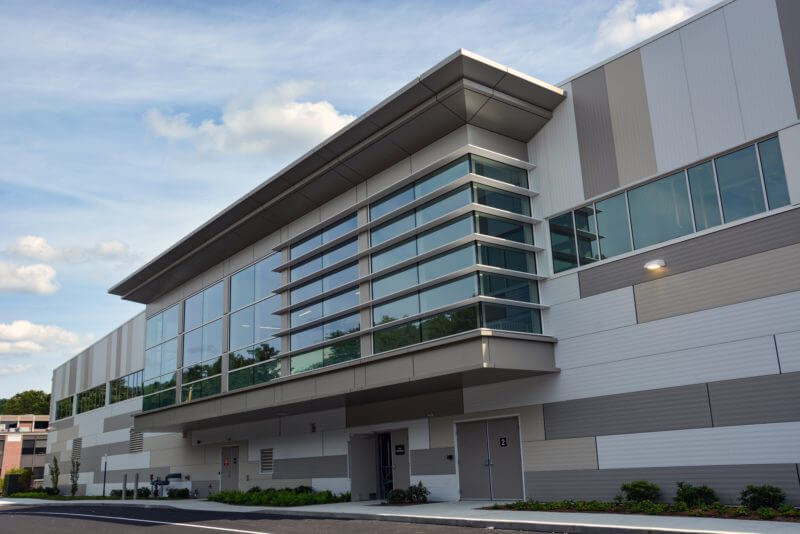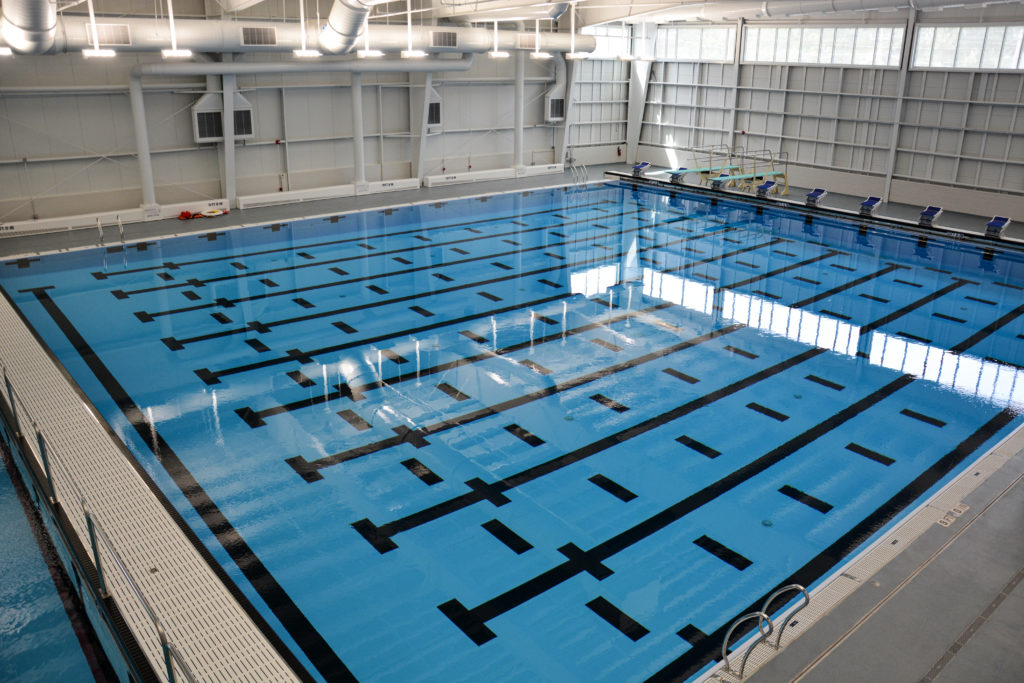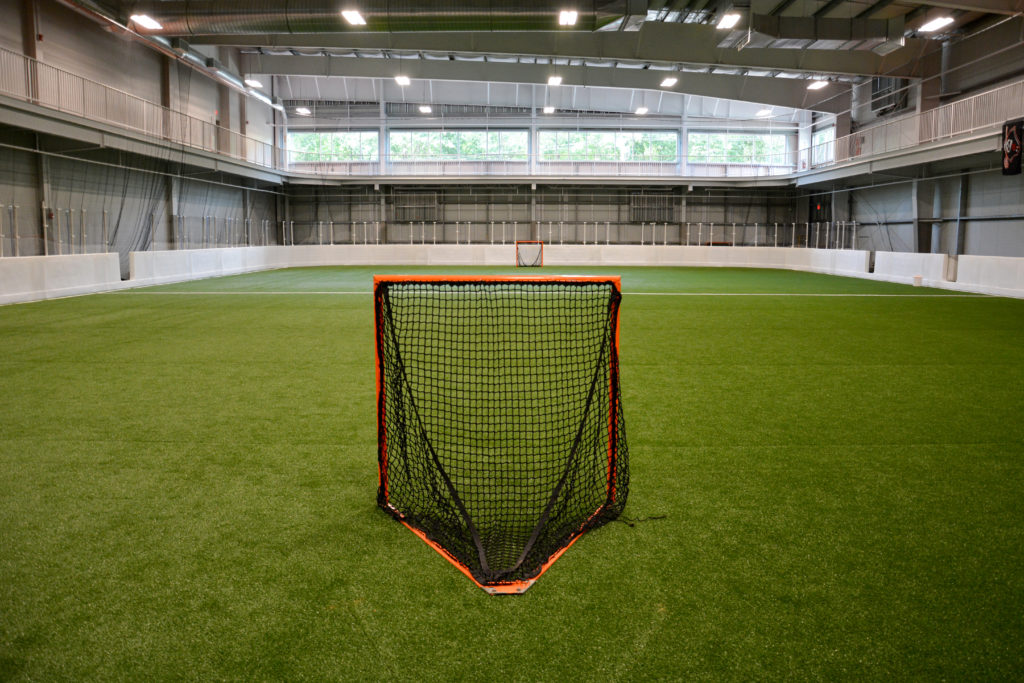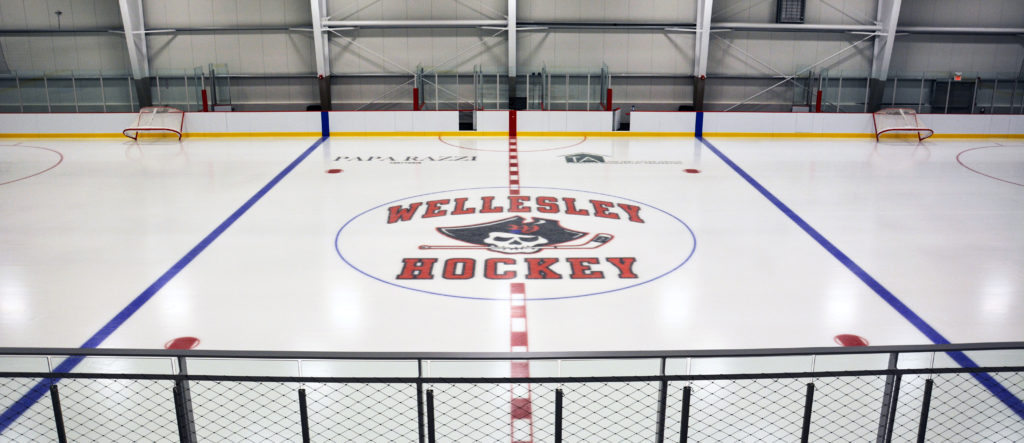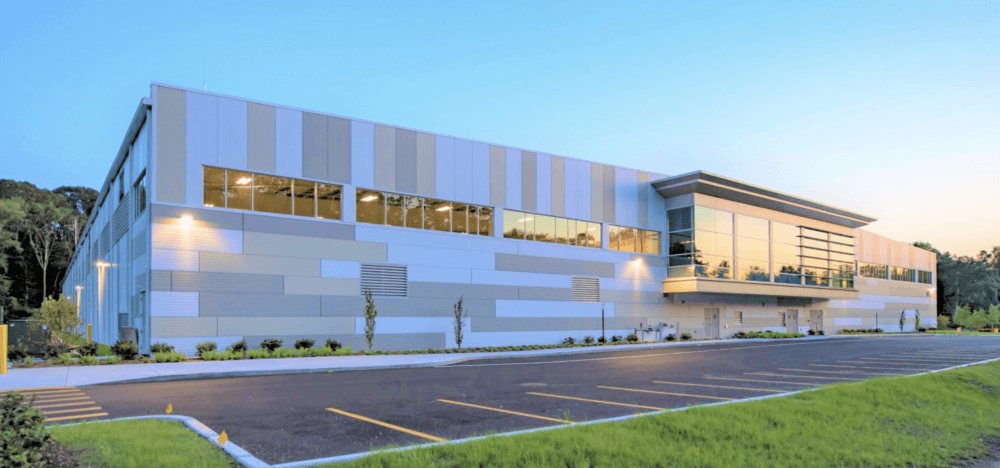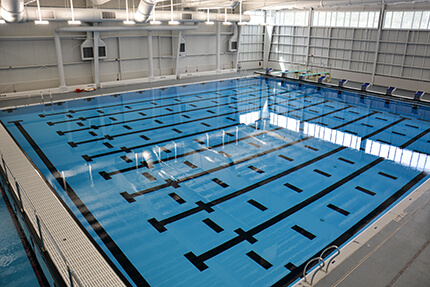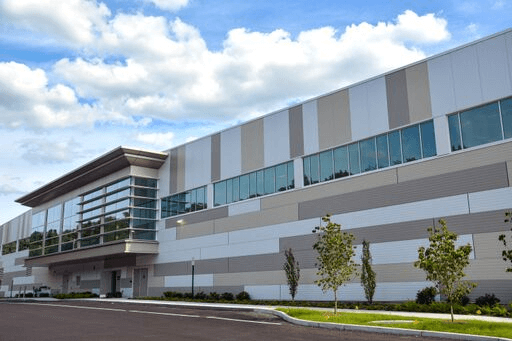Energy-Efficient Sports Hub
Located in a suburb of MetroWest Boston, the Boston Sports Institute in Wellesley, Mass., is a 130,000-square-foot multi-use recreation facility with two hockey ice arenas, a synthetic turf field, track, pool, warm-up pool, sports rehabilitation area and strength training space. Located in a collegiate town, the facility provides ice and pool time for local schools, and can be rented out for private organizations and sports groups.
Designed by PDA Inc., Natick, Mass., in connection with design-builder Dacon Corp., Natick, Barnes Buildings and Management Group Inc., Weymouth, Mass., was the project builder and installer. Completed in July 2019, the project presented a number of challenges, including an increased condensation risk from the high interior relative humidity levels of the pools (60%) and ice rinks (48%), which is minimized via thermal insulation.
A variety of energy conservation measures were incorporated into the building to address the operation challenges of multiple high-energy demand environments. Loop systems with heat exchangers and circulation pumps reclaim thermal energy from the ice rinks to heat the pool. And, LED lighting and high-efficiency water heaters are used for ice resurfacing, along with an ammonia refrigeration system. Additionally, the facility’s 100,000-square-foot roof and electrical infrastructure is set up for a 900kW photovoltaic array to be installed at a later date.
To meet the functional and aesthetic project goals, an exterior wall assembly consisting of 58,000 square feet of insulated metal panels (IMPs) from Metl-Span, Lewisville, Texas, in a tri-color pattern of Smoke Gray, Polar White and Sandstone provides a weather enclosure, insulation, and an air and vapor barrier. The facility is a metal building system from Houston-based Metallic Building Co., built around the shell of the pool, which was used for the 2012 Olympic trials, that was shipped to the site.
Kevin Provencher, AIA, LEED AP, director of architecture at Dacon, says IMPs are an effective solution for multiuse facilities with variable environmental requirements. “Both ice rinks and natatoriums have high moisture loads, but the ice rinks’ temperature will be maintained at 55 F while the pools are at 82 F. It’s an ideal wall system for a facility with demanding environmental needs.”
To hide the rooftop equipment, a parapet on the gable end of the building above the pool starts low at the eaves and grows to 3 feet at the peak. An accent band made with Metl-Span’s 7.2 Rib single-skin panels starts near the top of the building and continues horizontally from the windows.
More than 75% of the roofing is Metallic Buildings’ double-lock standing seam roof system in Galvalume. Metl-Span’s CFR IMPs in Galvalume are used for the roofing above the pool. The IMPs start approximately 35 feet from the roof peak so the top section is the standing seam panels. At the transition, the roofline drops 1 foot. The interior skin on the roofing and wall IMPs in the pool area are coated with Flurothane IV, a finish formulated to withstand corrosive environments from Minneapolis-based Sherwin-Williams Coil Coatings.
“Our client wanted a strong visual impact on the north façade facing the state highway,” Provencher adds. “When passing other commercial buildings, commuters notice this vibrant design featuring vertical and horizontal panels.”
Original Article: https://www.metalarchitecture.com/articles/energy-efficient-sports-hub

